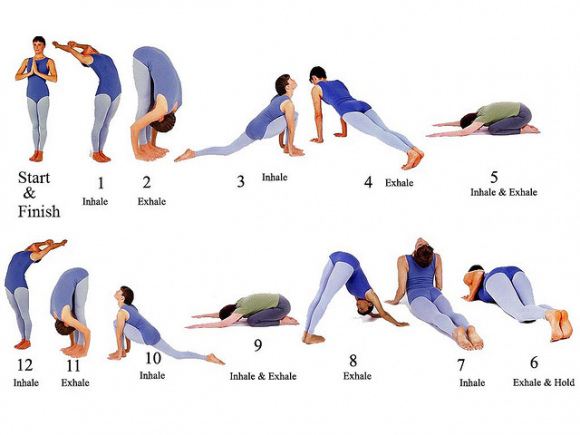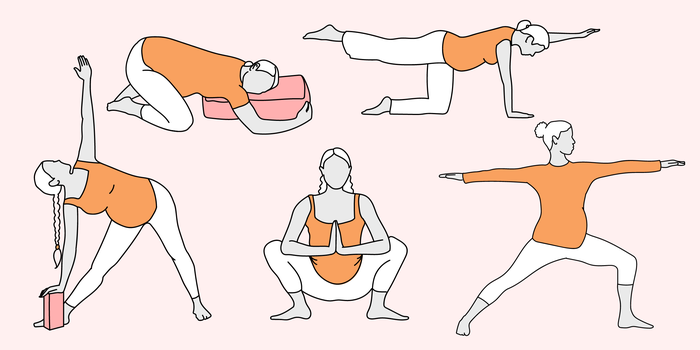
If you've been thinking about taking a yoga class or starting your own yoga practice, you may be wondering whether you should do certain things right. There are several mistakes to avoid, both when practicing at home and in a yoga class, so read on for some helpful advice. The first step to taking up yoga is to find a good teacher.
There are many misconceptions about yoga
It is common to believe that yoga requires some level of physical fitness. Yoga isn’t a sport where you need to bend your lower and practice inversions. But it’s an excellent way of building strength, flexibility and balance. Yoga is appropriate for all ages and all physical conditions.
Home practice mistakes to avoid
Overexertion is the first thing you should avoid when practicing home yoga. Overexertion is a dangerous habit that can lead to psychological and physical pain. This can happen even to experienced students. It is easy to lose sight of the safe points and get caught up with your ego. You can become more stressed if there isn't someone to guide you.

Avoid making mistakes in a class
When you first start practicing yoga, there are some common mistakes that you can make. These mistakes could lead to injury or discomfort. These mistakes can be avoided by following some important tips.
Sun salutations
Sun Salutations are a wonderful way to begin your yoga practice. They stimulate the parasympathetic nervous system, which not only helps you relax but also bolsters your immune system. Sun Salutations can increase the immune system's ability eliminate harmful free radicals from organs when done regularly. They improve your mood, and can even increase your energy.
Plank pose
Plank pose is an effective yoga exercise that will strengthen and strengthen your core. This pose is good for strengthening your back muscles and shoulders.
Pose of the child
For children who are new to yoga, the most basic child's pose is a good choice. This simple yoga pose helps to improve balance, increase mobility, and ease stiffness. You can use it to strengthen your ankles or knees. The key to a successful child's pose is breathing properly and being mindful of physical sensations.

The art of leaving behind your possessions
It is a great way to stretch and warm up your muscles by exchanging poses before you start yoga. Many of these poses can help strengthen the hips as well as the hamstrings. They also benefit the lymphatic, circulatory, and reproductive systems. However, some poses are not appropriate for everyone, so always make sure you do these poses under the supervision of an experienced teacher.
FAQ
Are there any side effects to yoga?
As with any form of exercise, yoga can have its risks. The most serious risk is injury. You should be able to safely perform each pose.
If you are just beginning yoga, you might feel dizzy when standing on the head.
This happens because of blood pooling in the brain. Don't worry, though; this sensation goes away quickly.
Do you feel chest pains when doing downward-facing dog? Don't hold the breath. This will only increase heart rate and make things worse.
What do I need in order to practice yoga?
To lie down, you will need a mat (some can be folded), loose clothing and a towel/blanket to place underneath your head.
Also, you may need props like straps to hold your blocks, straps to support your bolsters, blankets or towels in order for some poses.
You don't really need anything else. Yoga is a commitment.
What kind is yoga for beginners?
Yoga is great to do for anyone of any age and level of fitness. It's an easy and effective way to stay active and healthy. Yoga has been reported to improve mental and physical health. Yoga makes people happier and calmer.
Yoga isn't just exercise, it's a way of life that incorporates breathing exercises, stretching, meditation, and mindfulness.
There are many types of yoga. Some focus more on strength training than others. Others are more focused on relaxation.
What you desire from yoga will determine which type you choose. If you want to improve flexibility, then try Iyengar yoga. Or if you want to tone your muscles, go for Ashtanga yoga.
Do you offer yoga classes for those with special needs?
Yes, many yoga studios offer specialized classes to accommodate people with disabilities. These include:
-
Individuals with physical limitations who want to improve posture
-
People with limited mobility
-
Persons with arthritis
-
Recovering from injuries
-
The elderly
These classes are for anyone you know who would benefit.
What's the time commitment to learn yoga?
Yoga is a long-term journey that requires patience and dedication. Learning new things takes everyone at their own pace.
It doesn't make a difference how old you might be. You can master any type of yoga routine if you put in enough effort and are willing to work hard.
Is yoga safe for everyone?
Yoga is safe for all age groups, genders, races, abilities and abilities. Yoga has been used for thousands of years with no side effects.
Please consult your doctor if any of these conditions are present before you begin a new exercise regimen.
Statistics
- Lock in 25% off your Founding Member rate. (corepoweryoga.com)
- According to calorie estimates calculated at Harvard Medical School, the average 125-pound person burns about 120 calories in a half hour of hatha yoga, and a 185-pound person burns about 178 calories in that half hour. (everydayhealth.com)
- The American Psychological Association recently shared that 84% of American adults feel the impact of prolonged stress (5). (healthline.com)
- The people in the yoga group were 37 percent more likely to have quit smoking by the end of the 8-week program. (nccih.nih.gov)
- Start your Fall off right with 20% off All Access Membership when you sign up by 9/25! (corepoweryoga.com)
External Links
How To
Is yoga a good fitness exercise?
Yoga isn’t only for those looking to lose weight. Yoga helps you to develop flexibility, balance coordination, strength and calmness.
Yoga isn't just a form of exercise. These poses can be used to help you relax and meditate. These poses help improve our posture, concentration, breathing, and overall health.
The term "yogi" refers to someone who practices yoga. Yogis follow various forms of yoga, including Hatha, Ashtanga, Iyengar, Vinyasa, Bikram, Kundalini, Yin Yang, and Restorative.
There are many different types of yoga. They all have the same goals. Each type is focused on different aspects. Some yoga styles include meditation, pranayama, and Hatha.
Some yoga exercises that require no equipment are:
-
Sun Salutation - This series of 12 postures starts with a forward bend, followed by 10 other poses.
-
Warrior pose - This is when you hold a stick or a staff and take a warrior's pose.
-
Triangle Pose - This pose involves lifting one leg behind you and bending at the knee.
-
Standing Forward Bend - This pose is performed by sitting on the floor with legs straight and then folding forward at the waist.
-
Seated Twist- This pose is performed while sitting on a seat or mat.
-
Cobra Pose: This position is done lying on your back, arms raised.
-
Child's posing - This position is performed while facing up on the ground.
-
Cat/Cow Pose- This is a combination of a cat/cow pose. Keep your head down and raise your upper body above the ground. Then roll over onto your side and place your hands under your shoulders.
-
Head Tilt: This is when you tilt your head back and keep your eyes closed.
-
Shoulder Stand – This is a standing position in which your feet are raised above your head.
-
Tree Pose – This pose involves kneeling on your heels with your hands beneath your shoulders.
-
Bow Pose - This pose is completed by bending forward from the hips and placing your palms on the ground.
-
Corpse Pose – This pose can be held for up to five minutes.
-
Mountain Pose: This pose is known as mountain pose, because it requires you to stand tall and keep your spine straight.
-
Legs up the Wall Pose: This pose requires that you hang upside-down on a wall.
-
Side Angle Pose – This is achieved by leaning against the wall and placing your right arm near the wall.
-
Plank Position - This position is achieved when you lie flat on your stomach and extend your left arm and right foot away from each other.
-
Bridge Pose - This pose is obtained by balancing on your elbows and toes.
-
Reverse Table Top - This position is achieved by lying on the stomach and reaching your arms towards your ceiling.
-
Handstand - This position requires balance and strength. Hold yourself in between two walls or use a door frame to do this pose.
-
Half Moon Pose - This pose is also known as Hero Pose. It is performed by standing on your hands and toes.
-
Handstand or Headstand - This pose requires balance and strength. This pose can either be performed on a wall or with a doorframe.
-
Forearm Balance - This pose is performed on your forearms resting on a tabletop.
-
Spinal Twist - This pose lies on your belly while reaching your arms.
-
Supported Bound Angle Pose - This pose requires balance and support. For support, use a beam or tree branch to help you balance.
-
Wide Leg Forward Fold – This is achieved by extending your legs out and touching your toes.
-
Single Pigeon Pose - This pose is similar to the wide leg forward fold but has only one leg extended.
-
Extended Puppy Dog Poses - This pose can be very relaxing. This is done by stretching your legs outwards and bending your knees.
-
Seated Forward Bend - This pose is sitting cross-legged and stretching your hamstrings and calves.
-
Crow Pose – This pose can be difficult but rewarding once you are able to master it. You do this by raising your arms high above your head and lowering them to the floor.